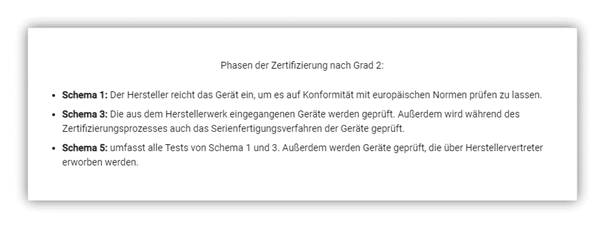The reliability of a security system is determined by its ability to fend off attackers using various information and device resources. The higher the level, the more resilient the security system. There are two important caveats to keep in mind: Grade 4 is rare in mass-market systems because regular requirements are very high, and Grade 3 is reserved exclusively for wired security systems. Therefore, only Grade 1 or Grade 2 can be awarded to manufacturers of wireless security systems.
Without going into technical detail, grades provide information about the reliability and scope of application of security systems:

Grad 1. The system can repel inexperienced attackers. It protects the most obvious access points, for example, entrance doors. It is suitable for rooms where there is a low probability of burglary and where no valuables are stored.
Grad 2. The system can repel experienced attackers who use special equipment. It protects doors, windows and other possible access points. It is suitable for an apartment, house or office.
Grad 3. The system can repel intruders who have professional skills and knowledge and use portable electronic devices. Besides any possible access points, walls and ceilings are also protected. It is suitable for large commercial facilities, such as shopping malls.
Grad 4. The system can withstand professional groups that plan burglaries in advance and are fully equipped. It is suitable for objects exposed to the highest possible risk of burglary or terrorist attacks.
Every manufacturer needs certifications for its devices. Only in this way is a security system competitive on the mass market and attractive for users. No professional security solution can do without certification, and certified devices are also an absolute must for property insurers and security services.
The certification process is a challenge for any manufacturer. The EN 50131 standard defines the requirements for all aspects of a security device. Manufacturers must comply with these requirements if they do not want to lose out in terms of two-way communication between system devices, data encryption and resistance to natural forces, vandalism and tampering. Therefore, they are forced to find appropriate solutions and develop truly reliable products. Non-certified technology does not have to meet these requirements, but it has the disadvantage that it can fail at any time.

